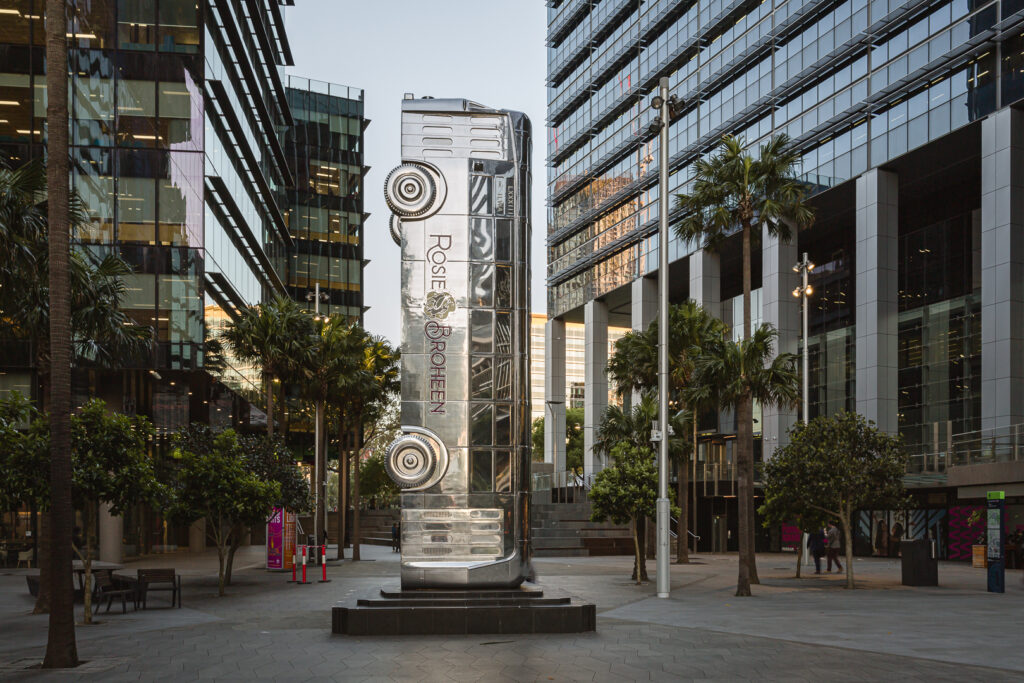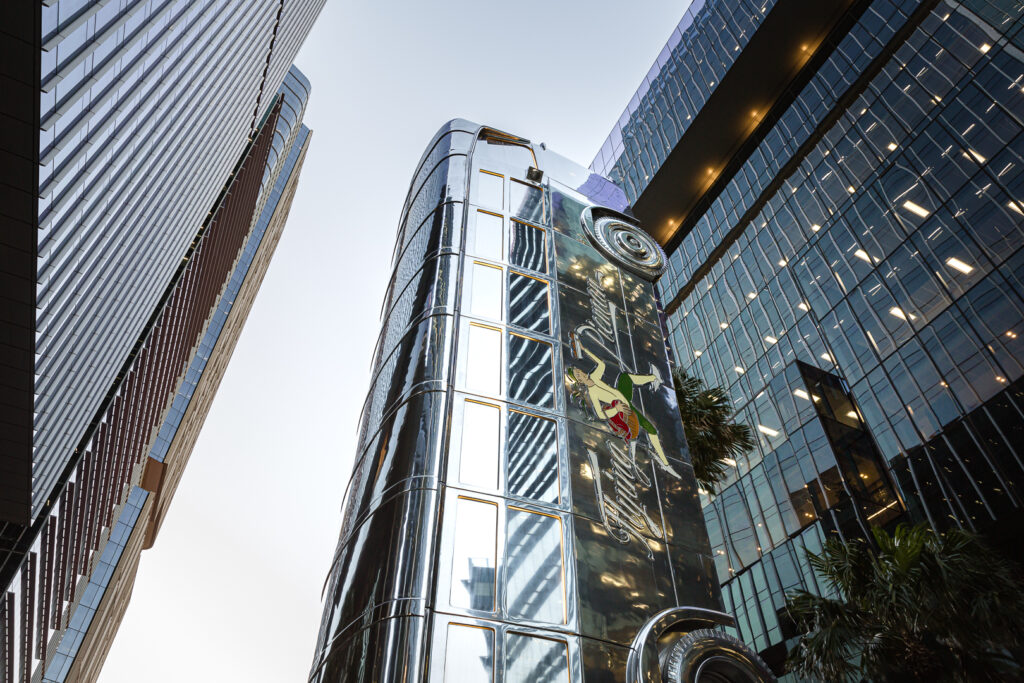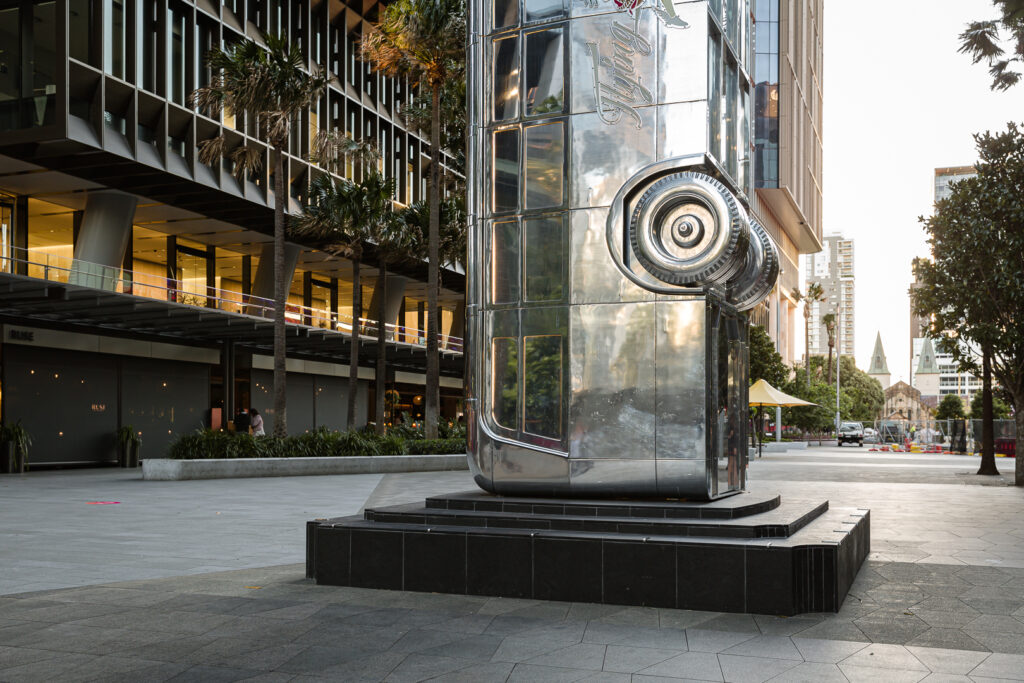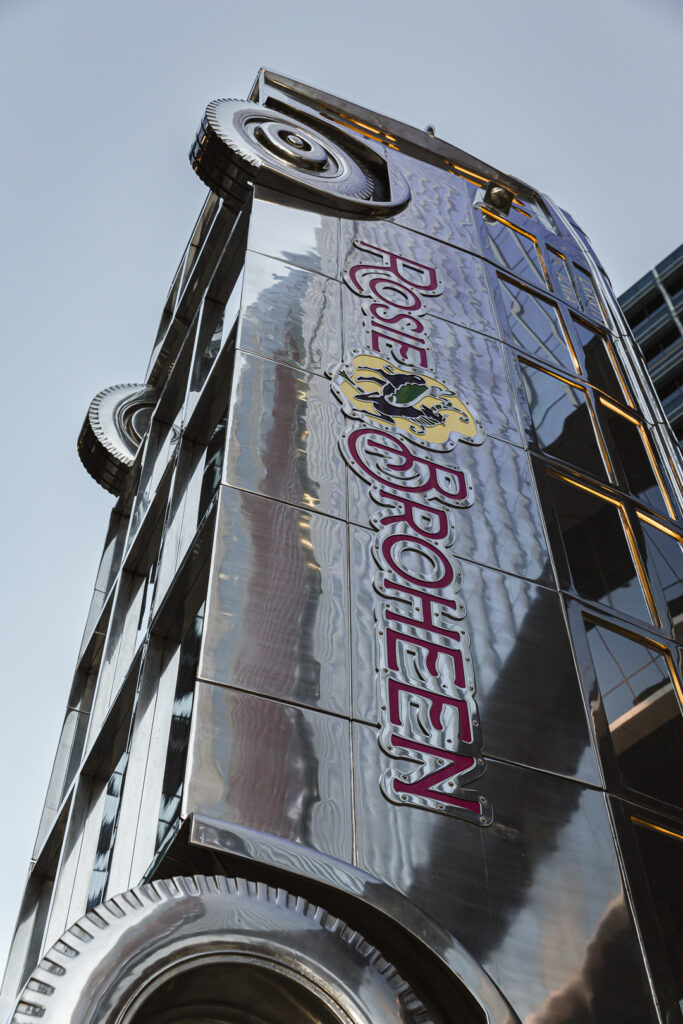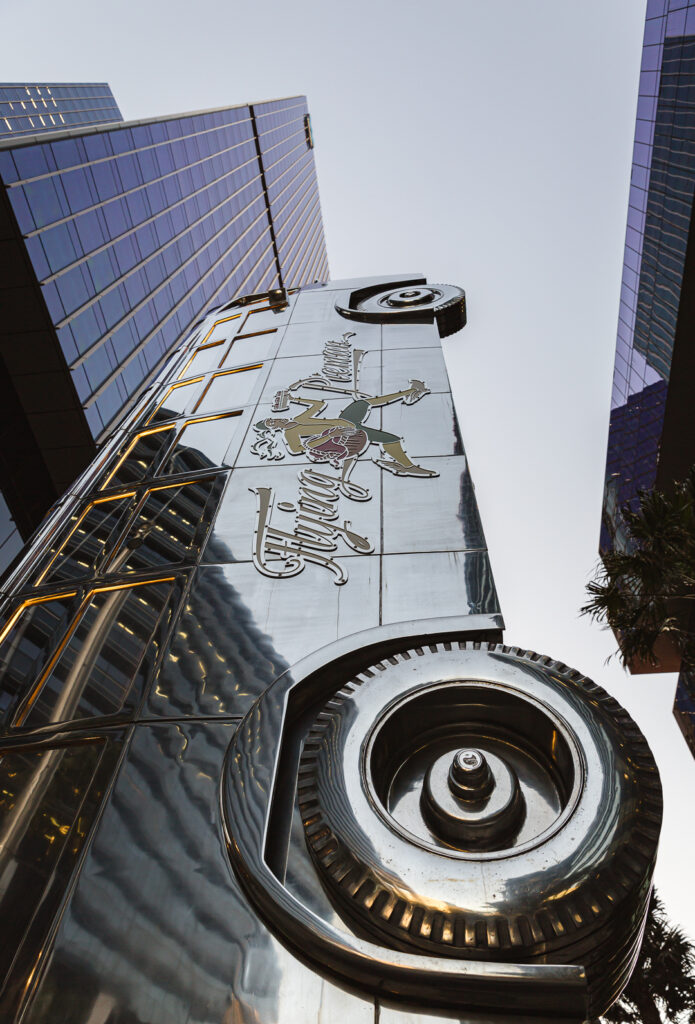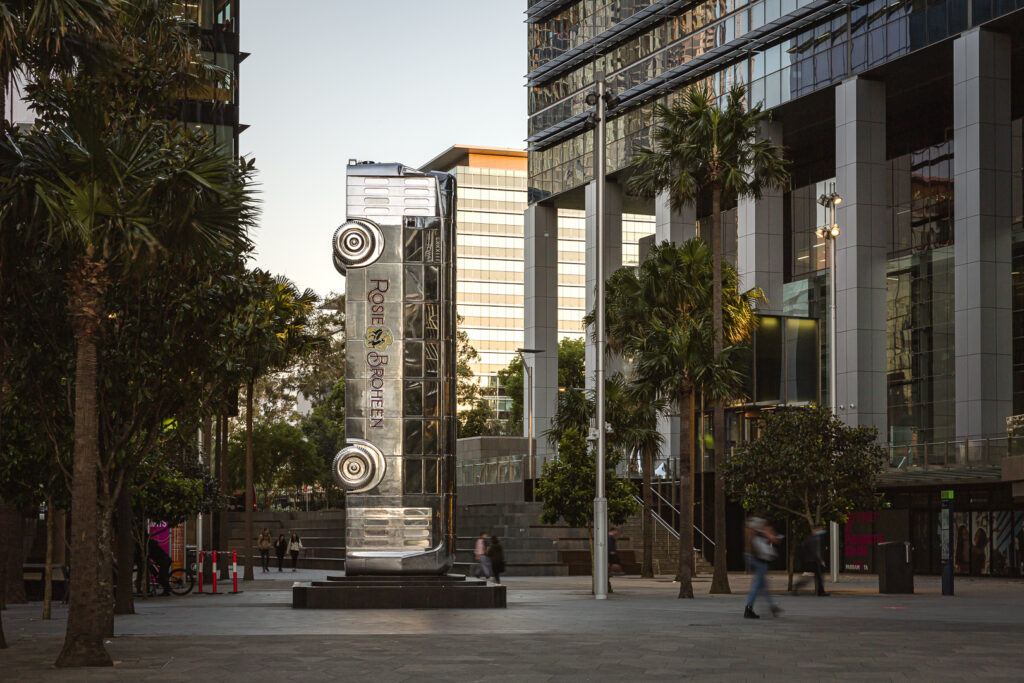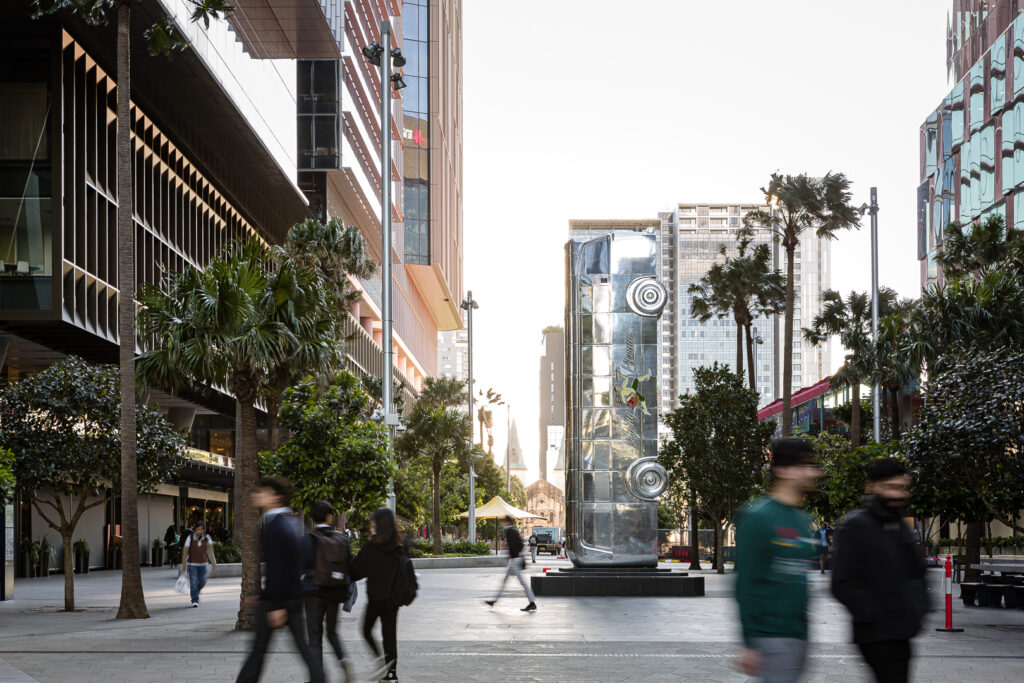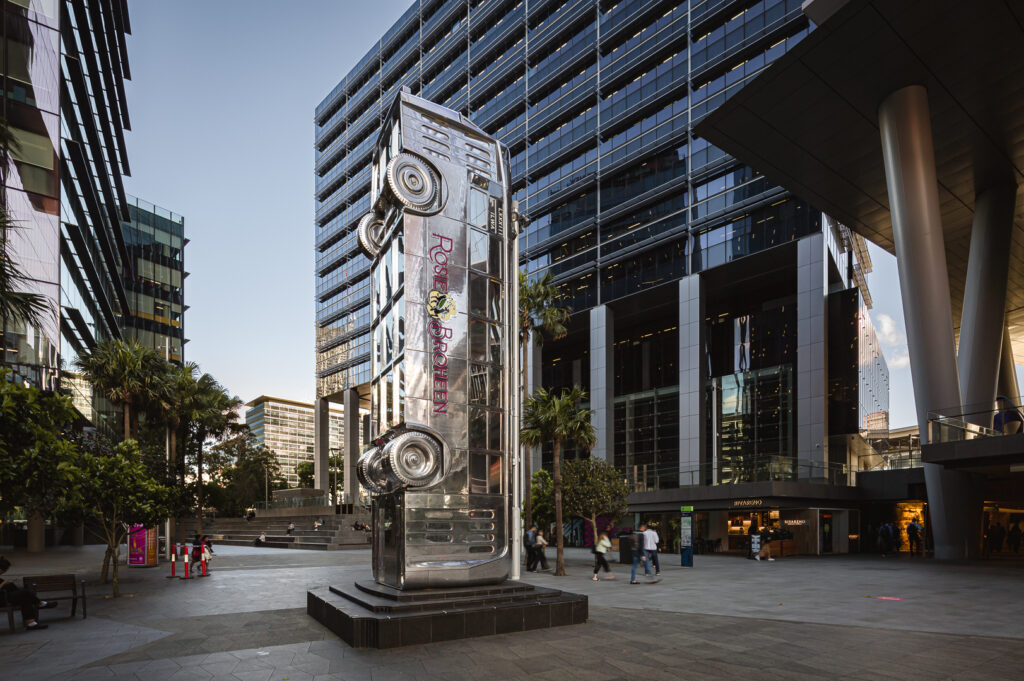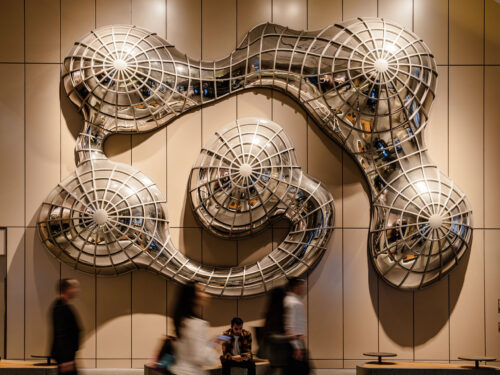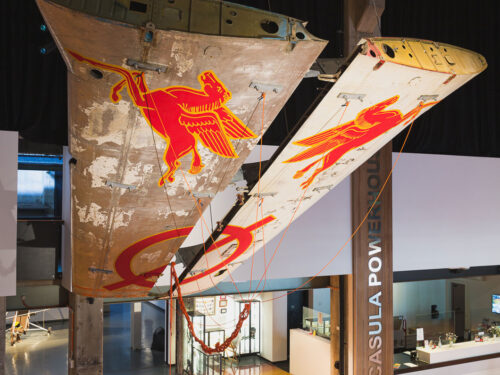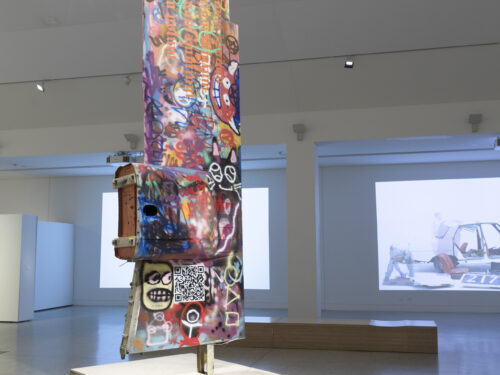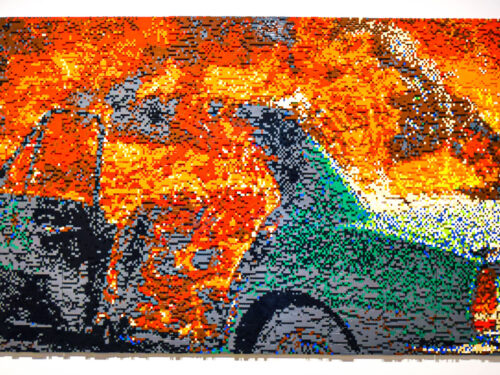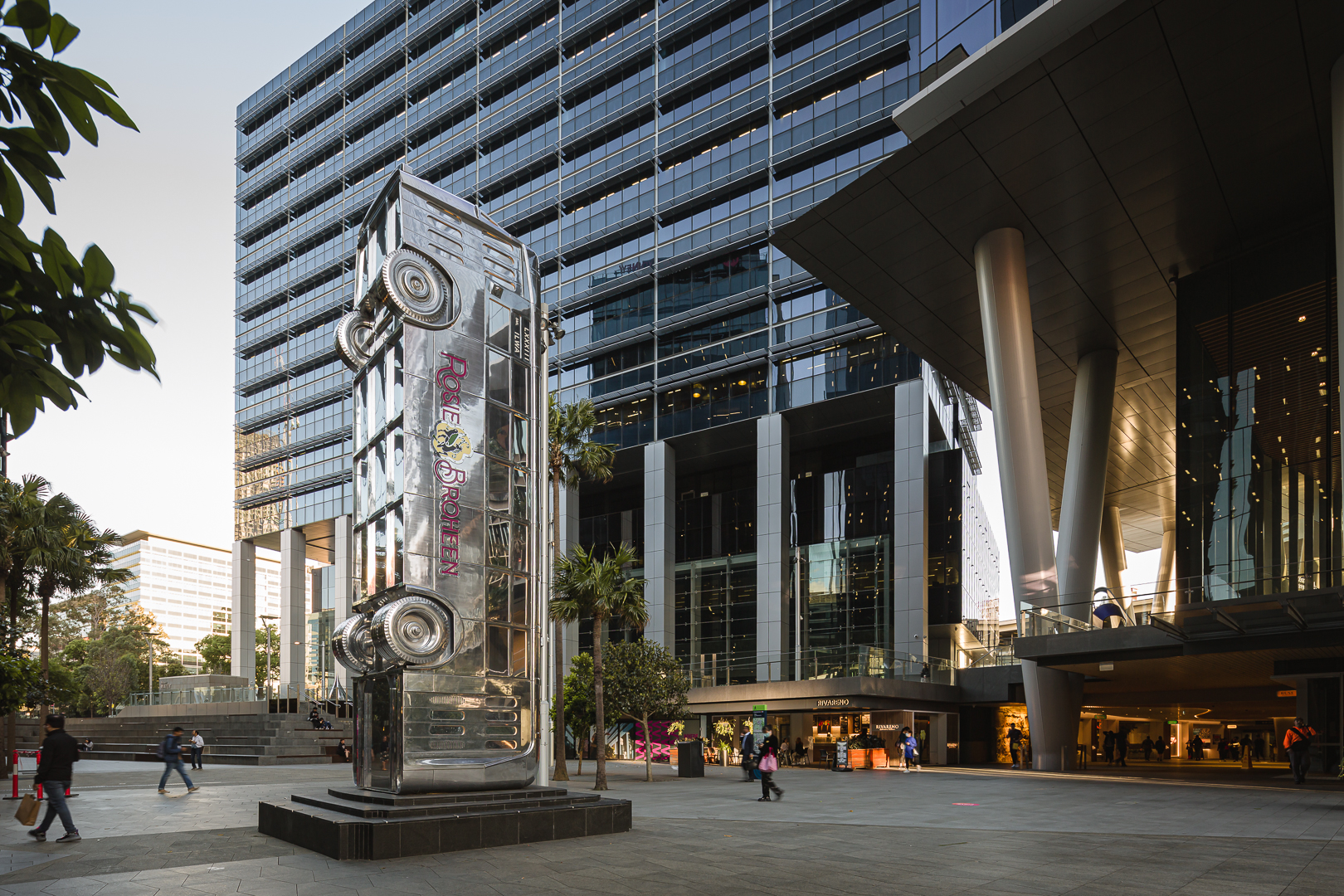
Place of The Eels
PLACE OF THE EELS
Thankfully the Aboriginal name Parramatta reminds us that this place has been home to the Dharug people for around 60,000 years. The Dharug word- Burramattagal literally means ‘the place where the eels sit down’. Also understood to mean ‘place of the eels’, the name Parramatta is the inspiration for our public work.
Colonial Parramatta was also founded in 1788 and was known as the ‘cradle of the colony’ due to its fertile soil and easy access to fresh water. It is said by some that if it wasn’t for Parramatta, the Sydney colony could have failed.1 Parramatta is its own place and has its own rich indigenous and post-contact history. We are very excited to be given the opportunity to create a monument to Parramatta that celebrates Parramatta’s unique past.
It is near impossible to say the two words ‘Parramatta and Eels’ in the same sentence without thinking about Rugby League. Therefore the idea of a gathering ‘Place of the Eels’ reminds us of a piece of Parramatta Leagues Club history that occurred in the early eighties. It was the golden-era of the legendary Parramatta Eels coach Jack Gibson, when after a slightly premature DIY demolition of Cumberland Oval in 1981, the Parramatta Eels found themselves nomads, with no home ground for four seasons.2
During this time the Eels trained at the spartan Granville Park. There wasn’t enough room to gather the team, so coach Jack Gibson (part-time bouncer and accomplished amateur boxer) thought outside the box and bought an old bus which the first-grade side used to conduct their team meetings, literally: the place where the Eels sit down. It was from this humble bus that Jack Gibson and Ron Massey would guide the team to win the 1982 and 1983 premierships- making Parramatta the only team to achieve this feat without a home base in football history.
It is this aspirational tale of an imaginative gathering space of humble origins- leading to incredible success that is the central inspiration for our Parramatta Square public art work Place of the Eels. The celebration of the brilliant ‘can-do’ vision of Jack Gibson, manifested within this vertical bus reinforces the idea Parramatta as a successful, creative gathering space.
As fellow Western Sydney residents we are very excited to offer this vision of Parramatta for Parramatta Square that is informed by our personal connection to Western Sydney.
1 http://richardjohnbr.blogspot.com/2013/02/granting-land-1788-1794.html
2 https://www.parraeels.com.au/news/2017/07/06/throwback–cumberland-burned-down/
DESCRIPTION
The bus that Jack Gibson bought: a Leyland Worldmaster,3 is transformed into a shiny metallic, trophy-like object which sits vertically, nose up within Parramatta Square much in the same way the vertical campus of Western Sydney University reaches straight into the sky. This verticality is a physical manifestation of the aspirations of Parramatta.
The vintage bus is a nostalgic object that recognises Parramatta as a major transportation hub as well as summoning memories of the past. The sculpture evokes memories of catching similar buses, sparking conversations between generations about different eras of Parramatta.
The eight-metre representation of the 1960’s government bus is cast in alluminium with a mirror-like reflective surface that captures Parramatta’s daily rhythm of growth and change. It reflects the people of Parramatta- commuters exiting the train station, Parramatta locals visiting the library, students attending Western Sydney University. The reflective surface invites individual audience members to take a closer inspection, to find their own reflection in the bus, or to marvel at the reflection of the public space of Parramatta Square, the movement, a hive of activity. The bus sculpture recognises the square as a major connection point for the city, reinforcing the role of Parramatta as major transportation hub.
The bus is positioned upon a base creating an informal meeting or gathering place for people.
Usually buses are not blank objects. The panels of the bus offer us the space to commemorate or celebrate other interesting historical elements of Parramatta’s past. Buses are adorned with texts and images related to transport information as well as advertising space. In essence the bus sculpture is a canvas on which we have showcased other moments within Parramatta’s historical legacy.
The mirror-like finish gives people a moment of interactivity, the opportunity to engage with the sculpture as well as provide photo opportunities and backdrops to popular culture.
3 https://www.southernhighlandnews.com.au/story/6721654/kick-to-the-seagulls-gibsons-super-tip/
THE BUS AS CANVAS
Our use of the quotidian bus as the central sculptural form within our public work gives us the opportunity share other clues or ‘Easter Eggs’ of history visible upon the surface of the bus. Buses are a kind of subliminal billboard on wheels. We have used the surface of the bus to illustrate
other points of Parramatta’s past that are interesting and helps bind the community together though the knowledge of a shared history.
PANEL 1- THE FLYING PIEMAN
The advertising panels of the bus have offered us the opportunity to create graphic historical references within the artwork. Our first panel speaks to the idea of Parramatta Square as
the ‘city’s feet’ – striding, connecting, reliable. The idea of striding, the speed and surety of gait certainly reminds us of the local character William Francis King (1807-1873). King, also known as The Flying Pieman or The Ladies’ Pieman, was a man famous for his feats of speed and endurance. The Flying Pieman would sell pies to departing ferry passengers at Circular Quay then pack up his pie stand and run with it to Parramatta, arriving before said ferry in order to sell more pies to the now disembarking passengers.6
We have created a mock advertisement for The Flying Pieman on the side panel of the bus. The Flying Pieman was an unusually dressed man, alternatively described as attired in striped breeches, a long jacket and a top hat decorated with streamers; or crimson knee-breeches, white stockings, a staff, and a top hat to which either streamers or paper tickets were attached.7
The inclusion of this dapper peripatetic pastry purveyor from the past celebrates Parramatta’s independent character as well as the intrinsic connection that Parramatta has with other parts of NSW.
BUS DESTINATION SIGNAGE – INDUSTRIAL SCHOOL FOR GIRLS
We have used these spaces on the front and sides of the bus to illustrate ideas of holding, gathering and embracing. Bus signage is usually a space where the destination and route of a bus is displayed. We have taken advantage of the textual nature of these spaces to place coded messages of holding, gathering and embracing within our sculpture.
Usually, signs of warm emotion are difficult to discover through the cold lens of archaeology. Ironically, it is within the troubled space of the Parramatta Industrial School for Girls (1887-1974) that such objects have been found. The institution was a welfare institution for girls, which included Indigenous girls from the Stolen Generations. In 2016 and 2017, a nine-month program of Aboriginal and historical archaeological testing was undertaken across more than 21 hectares of multi-phase institutions in North Parramatta.
Among the over 5000 objects that were found were combs and toothbrushes that had been inscribed by the female residents of the Factory.8 With the support of former residents of the Factory, contemporary historians can now understand the codes inscribed on these objects. We have displayed the following heartfelt wishes on our bus:
LXXXIII- ‘LOVE AND KISSES TIMES THREE’
SML- SEND MY LOVE
ILWA- ‘I LOVE WORSHIP ADORE/ALWAYS’
TID- ‘TIL I DIE
The existence of these coded messages shows past evidence of social cohesion and emotional solidarity among the residents of Parramatta Industrial School for Girls. These messages are important artefacts celebrating the ideas: holding, gathering and embracing.
8 Send My Love, Rhian Jones, AUSTRALASIAN HISTORICAL ARCHAEOLOGY, 36, 2018
PANEL 2 – ROSIE BROHEEN
We have used our second advertising panel to commemorate a female non-European migrant from 19th century Parramatta. Walking through Parramatta Square, it’s obvious that Parramatta is a city that is lucky to have a richly diverse culture. Traces of male British colonial era Australia are readily witnessed in the naming of streets and other landmarks in the area. It is great to take the opportunity to also celebrate different kinds of pioneering Australians in Parramatta Square. The current wave of new Australians in Parramatta mostly hails from China, India and Korea9 but old Lebanese/Australian ties can be traced back to the 1890’s. Sadly it is impossible to give space to the myriad of migrant stories in Parramatta but we wish to give space to at least one strong independent woman.
In particular, our heroine, Rosie Broheen, travelled from Kfarsghab, Lebanon to Parramatta in the 1890’s. Amazingly she travelled alone and without knowledge of English. Rosie’s changing name traces her changing nationalism and marriage status. When she reached Australia a custom’s officer interpreted her name: Rosie Bint Broheen which means “daughter of the Abraham family” into Rosie O’Brien. This was not her last name change, according to her great-grandson Len Norman, Rosie’s married name: Norman was also an anglicised name, derived from Nah’man. After relinquishing her Arabic name for a new Irish-flavoured handle, Rosie earned her living as an itinerant household ware hawker in Parramatta, following the footsteps of fellow Kfarsghab Mrs. Zahra Rizk.10
Rosie was successful in earning a living in Australia and according to family records she is the first Lebanese person to buy a property in Parramatta. Rosie sent money and news back home to Kfarsghab and soon other people from the community immigrated to Australia too. Today there are 20,000 people living in Parramatta that can trace their ancestry back to Kfarsghab.11
Conversely, the town of Kfarsghab in Northern Lebanon has visible ties to Parramatta, the main street has been renamed ‘Parramatta Road’, complete with an actual sign gifted by Parramatta City council in the 90’s and they even had a cafe named ‘Parra Cafe’.12 What could have been a story about a woman who sacrificed her name and cultural identity for a new land has become a story about a lasting bond between different communities and cultures.
We celebrate this historical story of transcultural exchange through the display of one of Rosie Bint Broheen’s many names on the side of our bus. Her name is displayed in a font contemporary to the vintage of the bus- alluding to the different layering of histories and cultures that make Parramatta the gathering space that it is today.
9 WAVES OF PEOPLE Published by City of Parramatta (2018) ISBN 978-1-876361-04-4
10 Kfarsghab Migration https://www.kfarsghab.com.au/kfarsghab-migration/
11 Lebanese Migration https://historyandheritage.cityofparramatta.nsw.gov.au/blog/2017/07/14/lebanese-migration
12 Home from Home https://www.smh.com.au/world/home-from-home-20071124-gdrobc.html
BADGE DESIGN
“Sempre Più In Alto” is contained within the badge design on the front of the bus. Italian for “Onwards and Upwards” or “Higher and Higher”, we have used this term to focus on the many and various aspirations held within this sculpture for Parramatta. “Sempre Più In Alto” is our slogan for this vertical bus, with its headlights shining upwards and into the heavens.
